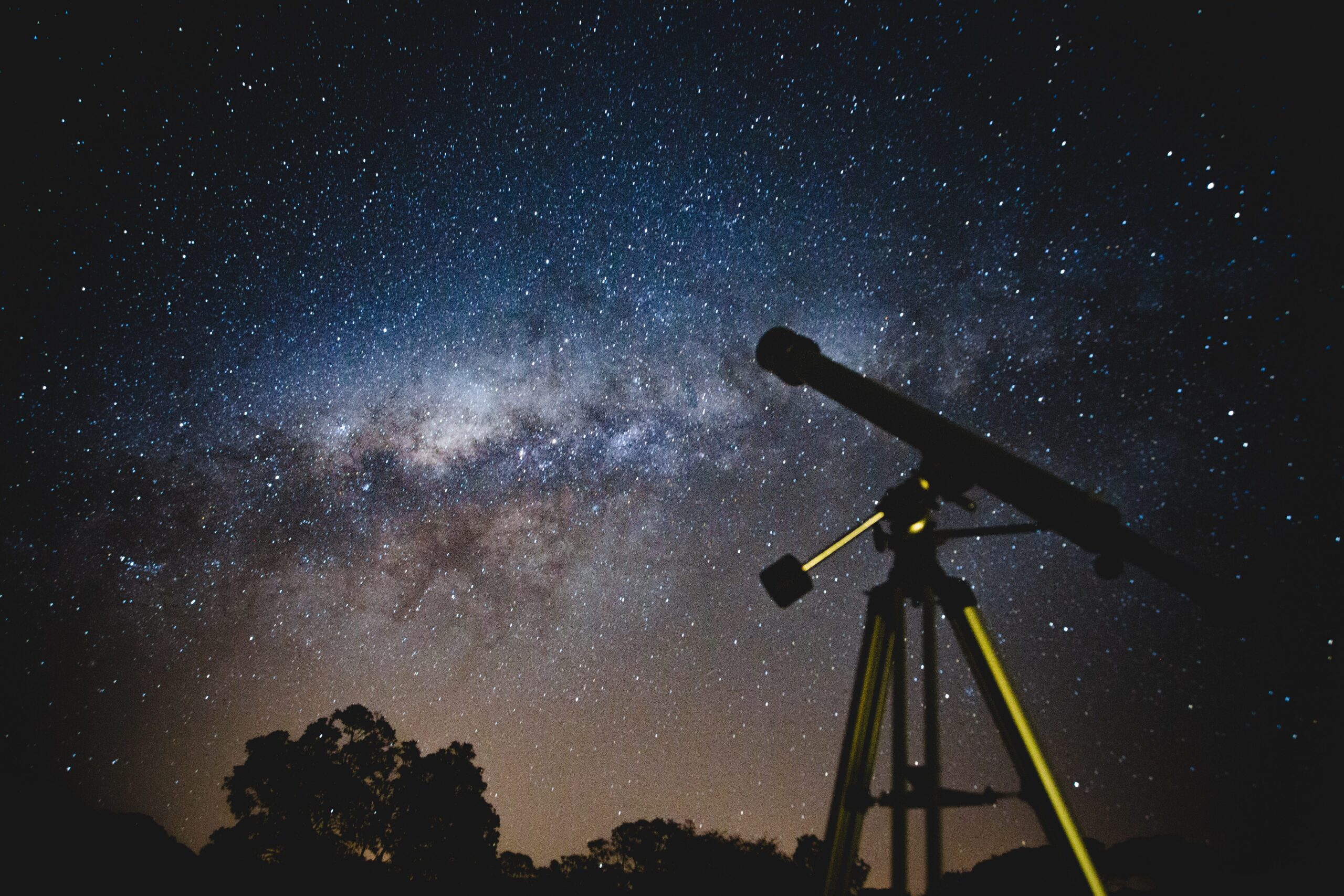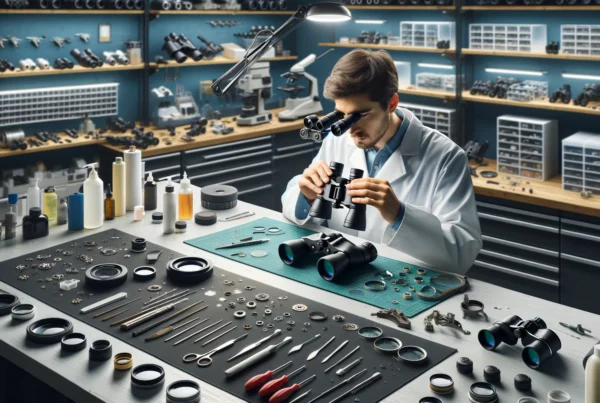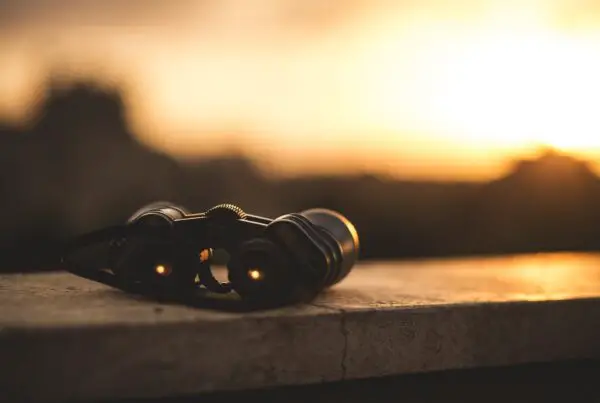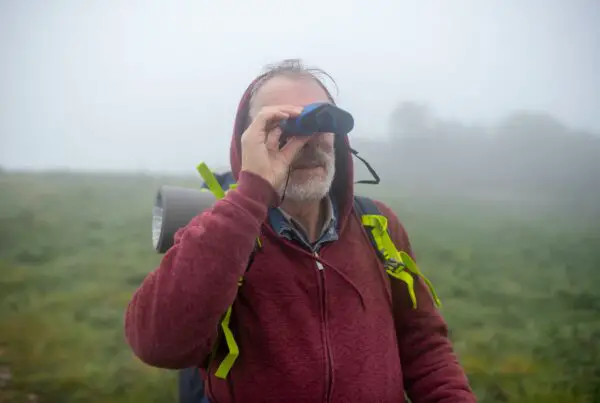Contents
- Why Binoculars Are Better than Telescopes?
- Why Binoculars Make for Better Viewing Than Telescope?
- What are Key Features of a Binocular?
- What are Key Features of a Telescope?
- Uses of Binoculars
- Uses of Telescope
- Types of Telescope
- Types of Binoculars
- Are Telescopes suitable for Astronomy?
- Are Binoculars Good for Astronomy?
- Binoculars vs. Telescopes: Key Differences and Why Binoculars are Better
- Bottom Line: Which One to Choose?
Binoculars and telescopes are two very different pieces of equipment, but they both have their place.
If you’re looking for a view to take in the stars or want to get up close and personal with the moon, then a telescope is what you need. However, if your goal is to observe something that’s not too far away from where you currently are, binoculars offer much better viewing than even a high-quality telescope.
This is a detailed comparison on both these equipments to help you make an informed decision.
Why Binoculars Are Better than Telescopes?
If you want a straight away answer, then here are a few reasons why Binoculars are generally better:
- Telescopes can be expensive while binoculars are relatively cheap – especially when considering how durable they are
- Since telescopes require a tripod in order to provide any sort of stability for viewing, many people find that they’re not the best option for children
- Telescopes are bulky and difficult to carry around, which means that you’ll almost always be stationary while using them
- Binoculars provide a far more wide scope of view than telescopes do, making it nearly impossible to miss anything.
Why Binoculars Make for Better Viewing Than Telescope?
Binoculars provide better viewing than telescope because they are easier to handle than telescopes. Telescopes come with intensive focusers and eyepieces, making them difficult to use at times. Binoculars on the other hand have fewer lenses, so they can be used easily by anyone without a degree of expertise in astronomy or astrophysics.
Wide Field of View
Binoculars provide a wider field of view, which makes them better than telescopes. Even in low light, binoculars can provide high-resolution images of the sky because they have large lenses that collect more light at one time. With a telescope on the other hand, if you want to view anything beyond 700X magnification then it’s necessary for you to upgrade your eyepiece, which will mean spending more money.
Portability
Binoculars give you a more immersive view of the night sky than telescopes because they are portable and easy to carry around, unlike telescopes that are huge and take up lots of space. They can be used outside on camping trips or for bird watching where it’s not possible to bring along your telescope with you. Binoculars are the best option for outdoor use where you want to view something in detail.
Multiple Magnifications
Binoculars offer a variety of magnifications and lenses, so it’s better than telescopes because there is greater flexibility with binoculars that come at different price points, which telescope does not provide. You can buy more expensive or cheaper binocular depending on your budget, unlike telescopes which are usually very expensive.
Budget Friendly
The best thing about using binoculars is they are cheaper than any telescope out there because you can buy one for as low as fifty dollars or more depending on the features and magnification level of the product. You don’t have to spend thousands or even hundreds of pounds when buying a telescope that can be pricey if you are not an expert.
Field of View
Binoculars allow the user to see objects in real time, unlike telescopes that have a very small field of view, which makes viewing live images difficult because there is no way for light to hit your eye immediately. Binoculars can help you enjoy observing nature or watching birds, whereas telescope cannot produce live images.
What are Key Features of a Binocular?
Binoculars are small and lightweight, easy to carry around. They can be easily fit into a pack or purse for convenient storage while traveling without taking up much space. Binoculars provide better magnification than telescopes; this is because they use prisms (and not lenses) to amplify the image of what you’re viewing.
Binoculars also have a wider field of view, so you can see more at once. Telescopes are better for viewing faint, distant objects because they have higher magnification and gather light from fainter objects to the lens or mirror inside the telescope.
Moreover, Binoculars are better for terrestrial viewing (watching objects on Earth) than telescopes because they are specifically designed to view things close up. Telescopes, however, can see further away without requiring their user to be closer in distance; this is why astronomers use them instead of binoculars.
What are Key Features of a Telescope?
Many people assume telescope is the correct term to use when talking about magnification, but this isn’t quite accurate. A telescope has a fixed magnification, usually around 50x or 60x depending on it’s size. The binocular
A telescope has a fixed magnification, usually around 50x or 60x depending on it’s size. The binocular magnifies the image much more than telescopes can, offering up to 20 times greater magnification power in most cases.
This is because the lenses of telescope use are very small and are limited to what they can magnify. Binoculars on the other hand use larger lenses which are able to capture more light and thus create clearer, brighter images of whatever you’re looking at.
Telescopes also provide a much narrower field of view than binoculars do. The telescope will have a very small area in the center where you can see objects, while your entire field of vision with a pair of binoculars is filled up.
Uses of Binoculars
- Binoculars are often used by birdwatchers, hikers, cyclists, motorcyclists, boaters, and other outdoor sports enthusiasts. They are also popularly used during airshows.
- They are used for surveillance in law enforcement settings because the telescope’s wide field of view is suited to surveillance duties.
- Binoculars also serve as spotting scopes, telescope attachments for cameras.
Uses of Telescope
- The telescope is mostly used by astronomers to collect information about stars, galaxies, planets and other objects in space.
- Telescopes are also used for surveillance purposes like crime scene investigation (CSI) where police use them to monitor traffic at intersections that might lead to accidents or by traffic police for spot fines.
- They are also used in the military as well as by NASA to do telescope repairs, or to install new instruments on spacecrafts and satellites orbiting Earth.
A telescope is a must-have item for those who wish to take up amateur astronomy seriously. It can be quite expensive, but once you invest in one of these, you are likely to use it for life.
Types of Telescope
There are several types of telescopes that you can buy or make at home.
Refractor Telescope
There’s the refractor telescope, which is like a traditional telescope with two lenses, but it has one lens made from glass and another blackened to reduce internal reflections in order to increase the telescope’s light gathering power.
Reflector Telescopes
Reflector telescopes are the most common because they use a mirror to focus light, which is why it has an open tube so that more of the telescope can be used for collecting light instead of obstructing the incoming rays by using lenses like in refractor telescopes. The drawback with this telescope is that it requires a telescope mount and tracking to see objects for an extended period of time.
Catadioptric Telescopes
The third type of telescope uses both lenses and mirrors which are called catadioptric telescopes. Their reflective telescope element allows them to be compact but they can still produce high quality images like the refractor telescope.
Types of Binoculars
There are many different types of binoculars. Each type has a specific use and each have their own advantages, disadvantages, and prices. The specific type will depend on the person using them as well as what they want to do with them. Some of the most popular types include:
Porro Prism Binoculars
These are the most common type of binocular. They have a body shape that is rectangular in appearance, with the eyepiece lenses being on either side of this rectangle.
Porro prism binos can be found at many different price points and quality levels, making them more accessible to everyone. They are great for beginners and if you want to use them while hiking or camping, they can easily be held in one hand by your side.
Roof Prism Binoculars
There is a single piece of glass that reflects the image inside of these binos and then down towards two eyepieces on either side. This type of binoculars will have a more compact size and they are lighter than Porro prism ones too.
These can be great for someone who wants to pack light or carry them around with ease, but may not stay as steady when you go to use them so it is important to ensure that the truss frame holds up well and stays in place.Also Check
Also Check
6 Best Compact Binoculars 2022
Are Telescopes suitable for Astronomy?
In the past, telescope technology was not advanced enough for astronomy. Nowadays, telescopes are extremely powerful and can be used to view celestial bodies from a great distance away with high detail.
While this is nice in theory, there are many reasons why they should NOT be used when viewing stars or planets. Binoculars have become popular recently due to their ease of use and portability. While telescope technology is always improving, binoculars are a great option for those looking to start their astronomy journey with the right tools from day one.
There is no need to worry about alignment or magnifications when choosing between telescope vs binoculars, since both offer options that have been designed specifically for this purpose.
However, telescopes are still useful for stargazing as long as they are used for objects that do not require high magnification, such as the moon and planets.
Binoculars will provide a much more immersive experience since you’ll be able to see everything in one view, rather than having to turn your telescope around or adjust it repeatedly, which can get exhausting after time.
Are Binoculars Good for Astronomy?
Binoculars are a great option for amateur astronomers that want to experience the beauty of space without having to worry about telescope alignment or magnification. Since binoculars provide an all-round view, you will be able to see everything happening in one place rather than moving around your telescope again and again, which can become tiring after time.
Binocular stargazing is a popular choice for many stargazers who want to watch stars, planets and other objects in space without investing in expensive astronomy equipment.
Why are binoculars really suitable for stargazing? Well, there are several reasons why they make for a good choice:
- Binoculars offer higher magnification and wider field of view, which means that stargazers see not only fainter objects but also bigger picture when using them. Telescopes have a narrower field of view when compared to their magnification.
- Binoculars are lighter and easier to carry around when going for stargazing, which makes them better choice than telescopes that can be cumbersome and difficult to move from one place to another.
- Telescopes come with mountings necessary for keeping the object in sight while binoculars do not require any.
- Telescopes are more expensive than binoculars and some of them may cost around a thousand dollars while the price of mid-range binocular telescopes is just lower, which makes it easier for stargazers to afford good quality equipment.
Binoculars offer great value when compared with other options that are available, with the only downside being that they are not suitable for deep space objects. But if you’ve been looking to buy a binocular telescope and wondering whether it is worth the investment or not, then we suggest going ahead because in most cases it definitely will be!
Binoculars vs. Telescopes: Key Differences and Why Binoculars are Better
The key difference between binoculars and telescopes is that while a telescope has one lens or mirror, binoculars have two lenses working together to create an image. They work by bending light, so it can be seen in the human eye.
Binoculars are better than telescopes because binoculars have the capability to work in daylight, unlike telescopes. Binoculars can also be handheld rather than mounted on a tripod or other apparatus.
Telescopes are more powerful, but they need to be set up and don’t usually allow you to see things as well with them during the daytime. Telescopes can be used to magnify things on Earth, but they are often used for viewing the moon and faraway planets.
Binoculars vs. Telescope: Key Points
- Binoculars are much lighter than telescopes, making them easier to carry for longer periods of time.
- The magnification capabilities on binoculars is higher than that of a telescope so you can see more detail in distant objects.
- You can use binoculars to view objects that are closer, whereas telescopes have difficulty focusing on nearby subjects.
Bottom Line: Which One to Choose?
When it comes down to it, there really isn’t a comparison between the two, since they serve very specific functions and purposes. If you’re looking for something lightweight with high magnification capabilities, then definitely go for some good quality binoculars. If you’re looking to explore the galaxy and far away objects, then a telescope is definitely the way to go!

A Binoculars enthusiast, who love exploring skies and watching birds. It is my hobby to collect Binoculars of different kinds and try to explore the world through various lenses. This is all I do to explore happiness by magnifying my beautiful world.




